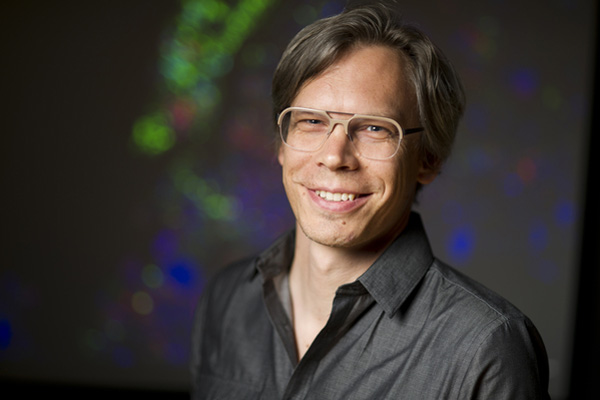How trash can reveal an urban landscape’s ‘invisible realities’

Dietmar Offenhuber, a newly appointed assistant professor of information visualization, strives to unveil the invisible realities of the urban landscape by mapping the spatial organization of people and objects.
His ultimate research goal, he said, is to uncover the inner workings of citywide infrastructure systems in order to influence the policymaking agenda.
“You can use this data to construct meaning in scientific discourse as well as in the public policy domain,” said Offenhuber, who holds joint appointments in the College of Arts, Media & Design and the College of Social Sciences and Humanities.
Two of his research projects began at an unlikely source: trash. For one project, he worked with waste picker cooperatives in São Paulo and Recife, Brazil, in order to understand their spatial organization. Using GPS loggers, he mapped their collection routes throughout the city, and then developed a smartphone application for a community-based recycling program in which residents and business owners could request pickup of paper, plastic, and other materials.
The project’s goal, Offenhuber said, was to support the waste pickers on their way to professionalization. “By placing their movements ‘on the map,’ it conveyed a sense of identity for the cooperative, providing tangible evidence of their place in the city,” he observed in an academic paper on the project. “The recyclers’ movements are highly selective,” he added. “They focus on spatially dispersed individual sources—apartments, markets, and businesses—rather than servicing a coherent area.”
For another project, he stuck GPS tracking devices to 3,000 pieces of trash in the city of Seattle and then mapped the garbage’s movement over a two-month period. Most of the trash remained in the city, Offenhuber said, but some of the cell phones, fluorescent light bulbs, and batteries ended up in states as far-flung as Florida, Michigan, and Idaho.
The project won the 2010 National Science Foundation International Science and Engineering Visualization Challenge and the findings shed light on an environmental paradox: “We found cases in which the transport of recycled items consumed more energy than it would be possible to capture from the objects themselves,” Offenhuber explained. The upshot, he said, is that “we have to design a less centralized collection model that involves the individual to a larger degree.”
Offenhuber completed both projects as a research fellow and doctoral candidate in the SENSEable City Lab at the Massachusetts Institute of Technology. His faculty appointment aligns with Northeastern’s commitment to serving as an educational leader in understanding big data through information design, a field for which the university has developed a new interdisciplinary master’s program.
Offenhuber serves as one of the program’s core faculty members and praised its unique approach to translating data into visual, physical, and virtual forms. “Very few programs in the country focus specifically on visualization and data-driven modes of design,” he explained, noting his goal of strengthening the program through collaborations with colleagues in Northeastern’s Center for Complex Network Research. “The university is a very dynamic place.”




